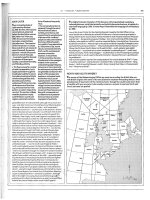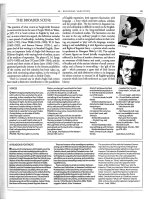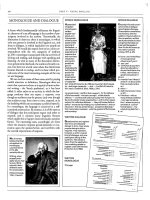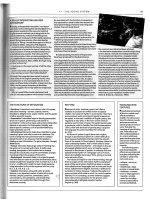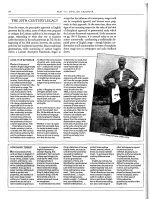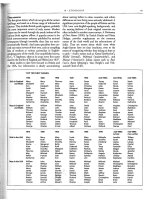Public transport From Wikipedia, the free encyclopedia
Bạn đang xem bản rút gọn của tài liệu. Xem và tải ngay bản đầy đủ của tài liệu tại đây (134.71 KB, 2 trang )
bản tin
Public transport
From Wikipedia, the free encyclopedia
Jump to: navigation, search
Shinkansen high-speed train, Japan
Tram, Melbourne, Victoria (Australia)
A bus used on the RIT bus rapid transit system in Curitiba, Brasil
Chhatrapati Shivaji Terminus in Mumbai, India
This article is about passenger transportation systems. For mathematics, see transportation
theory. For other uses, see Mass transit (disambiguation).
Public transport (also public transportation, public transit, or mass transit) comprises
passenger transportation services which are available for use by the general public, as
opposed to modes for private use such as automobiles or vehicles for hire. Public transport
can consist of rapid transit (including subways, undergrounds etc.), trams and light rail,
commuter trains, buses, van pool services, paratransit services for senior citizens and
people with disabilities, ferries, water taxis, or monorails.[1]
Public transport is provided by a company or authority that operates a fleet of vehicles.
They may or may not be regulated or subsidized by authorities. The infrastructure used
may be exclusive, or shared with private vehicles. Urban transport is dominated by people
making many short trips multiple times per day; this creates focus on headway and ease of
use.
Intercity transport between cities is dominated by rail, coaches and airlines. Long journeys
give air travel a large time advantage over all other modes of transport. On distances up to
1,000 kilometres (620 mi) high-speed rail can compete time wise with airlines, while
conventional rail and coaches only can offer time-competitive services on shorter distances.
Comfort is a much more important part of long-haul than short-haul transport. Using
interconnected public transit lines to travel from city to city is called megaloping.[citation
needed] A travel class is a quality of accommodation on public transport. Higher travel
classes are more comfortable and more expensive. Not all modes and operators offer class
differentiation. Public transport services are usually funded by fares charged to each
passenger, with varying levels of subsidy from local or national tax revenue; fully-
subsidised, zero-fare services operate in some towns and cities.
For historical and economic reasons, there are differences internationally regarding use and
extent of public transport. While countries in Old World tend to have extensive and
frequent systems serving their old and dense cities, most cities of the New World have
more sprawl and much less comprehensive public transport.




